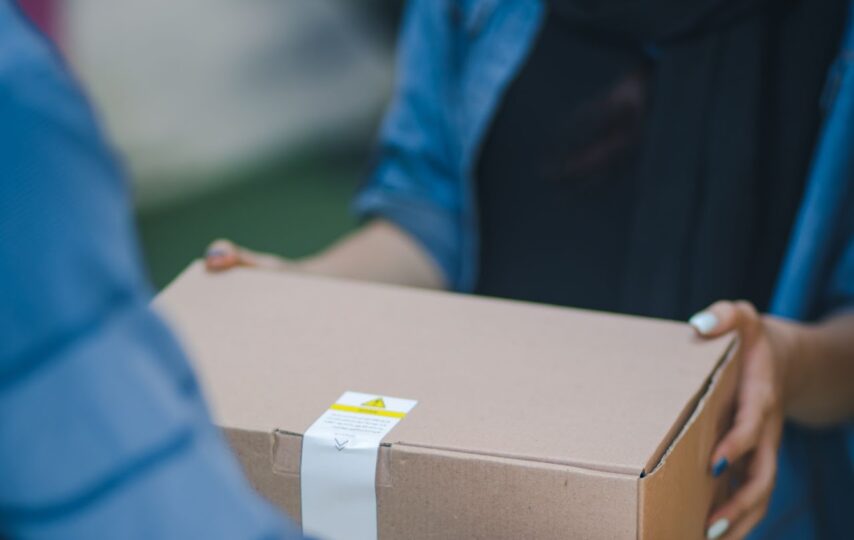If you’re working in e-commerce, fulfillment logistics are your lifeline. You’ll want to ensure you understand them to a tee. We put together this deep dive just for you so that you can increase your store’s efficiency and more.
Let’s jump right into this fulfillment logistics deep dive!
What are Fulfillment Logistics in E-Commerce?
First, it’s crucial to understand precisely what fulfillment logistics are in e-commerce. These logistics are essential to getting a customer’s orders to their doorstep. They make up every step, from storing products, to picking and packing the order, to delivery.
Customers put a lot of trust into the fulfillment process. If your e-commerce business is lacking in this area, customers will notice and probably won’t buy from you again if something were to go wrong.
Fulfillment starts before the customer checks out, so you must understand it to get the most out of it.
Why is E-Commerce Fulfillment Important?
Your fulfillment process directly impacts how successful your online business is. Good fulfillment gives customers a positive experience with your brand. In today’s world, customers expect fast shipping. The sooner you fulfill an order, the happier they’ll be.
Good customer experiences also require the orders to be as accurate as possible. With a better e-commerce fulfillment system, your customers will get their orders accurately and in good condition much more often. The more accurate the fulfillment, the more customers trust your brand, and you’ll have an improved reputation.
Lastly, good fulfillment will lead to customers having more loyalty to your business. They’ll make more repeat orders and form a long-term relationship with your company. All of these reasons make reliable fulfillment essential.
Breaking Down the Steps in Completing Fulfillment
Every aspect of the fulfillment process is essential; you must ensure you get them right. Let’s go over all of the steps.
1. Warehouse Management and Product Storage
Fulfillment starts even before the customer finishes their order. You’ll need first to establish an efficient warehouse layout. By doing so, your team can pick and pack orders faster.
So, you’ll need to consider where everything is stored carefully.
2. Order Placement and Verification
The customer places an order, usually online. They’ll receive a verification, often in their email, about their order. This quick process gives them a chance to check if it’s correct.
Your warehouse will check that all items are available for the order. If they’re out, they’ll notify the customer.
Most modern warehouses use management systems that make everything run smoothly. These programs track products and orders, leaving less room for human error. They can even predict surges in demand so you order enough products.
3. Customer Contact
Photo by Brett Jordan on Unsplash
Keeping in touch with the customer once they order is an important, yet often overlooked, step in fulfillment. They want to know where their package is and when to expect it. If you don’t offer good tracking, they won’t have a good experience shopping with your brand.
It helps if you send some automated messages to their phone or email. Ensure to provide information there in case the customer wants to contact your support team.
4. Shipping the Order
Next, the package needs to get to the customer. You’ll want to spend time researching your various carrier options. Make sure you consider your budget and how reliable the shipping company is.
Customers will view The carrier as an extension of your company, so it’s not something you should choose on a whim. Make sure that the group optimizes its shipping routes to reduce delivery time. You want orders to arrive as soon as possible for customer satisfaction.
5. The Importance of Last-Mile Delivery
Last-mile delivery refers to the final step in the fulfillment process, minutes before the customer receives their order. This step often impacts shipping costs most, so it’s essential to get it right. Customers also expect to receive the package within a set amount of time, and it’s often up to last-mile carriers to get it there quickly.
You can use local warehouses for last-mile delivery. If you place the warehouses near your largest customer bases, you’ll be able to have faster shipping times than your competition, giving you an edge over them.
Overall, this last step impacts customer satisfaction and your reputation the most!
6. Handling Customer Returns
Sometimes, the customer returns their order. It could be for any reason. No matter why they want to return the items, you must make it an easy process for them. This process also falls under fulfillment.
Here’s how returns should go in fulfillment:
- Ensure that your return policy is clear and concise.
- It’s easy to make a return. Most of the time, the customer must contact your customer service team to learn how to do it. They may also get a shipping label from the team.
- The customer ships the order back to you, so you’ll need accurate tracking again.
- Once you receive the returned order, inspect it to ensure it can accept it as a return.
- Refund the customer or offer them a credit.
- Use inventory management to track the status of a return and add it back into your product lineup if it’s in good condition.
- Record and analyze data from returns to see where you can make improvements.
- Get feedback from your customers who make returns to help you see where the issues are.
7. Check Your KPIs
Lastly, you’ll want to ensure you’re tracking your key performance indicators or KPIs. KPIs will let you know whether an order was accurate and how long it took to arrive at the customer’s door.
Record this data and use it to see where your e-commerce brand needs to improve. You can use KPIs to review and work on every aspect of your fulfillment process, so you shouldn’t ignore them.
You’ll need to track several KPIs, including cart abandonment rates, average order values, and conversion rates. Generally, this is the last step for most companies.
Fulfillment is Your E-Commerce Lifeline
In short, you’ll need to optimize your fulfillment process if you’re an e-commerce business. We hope this deep dive gave you insight into all the steps to improve!







